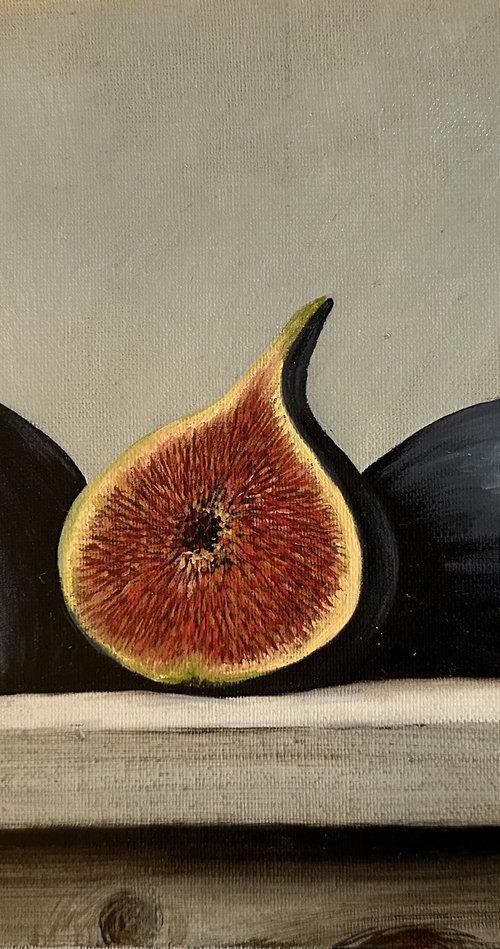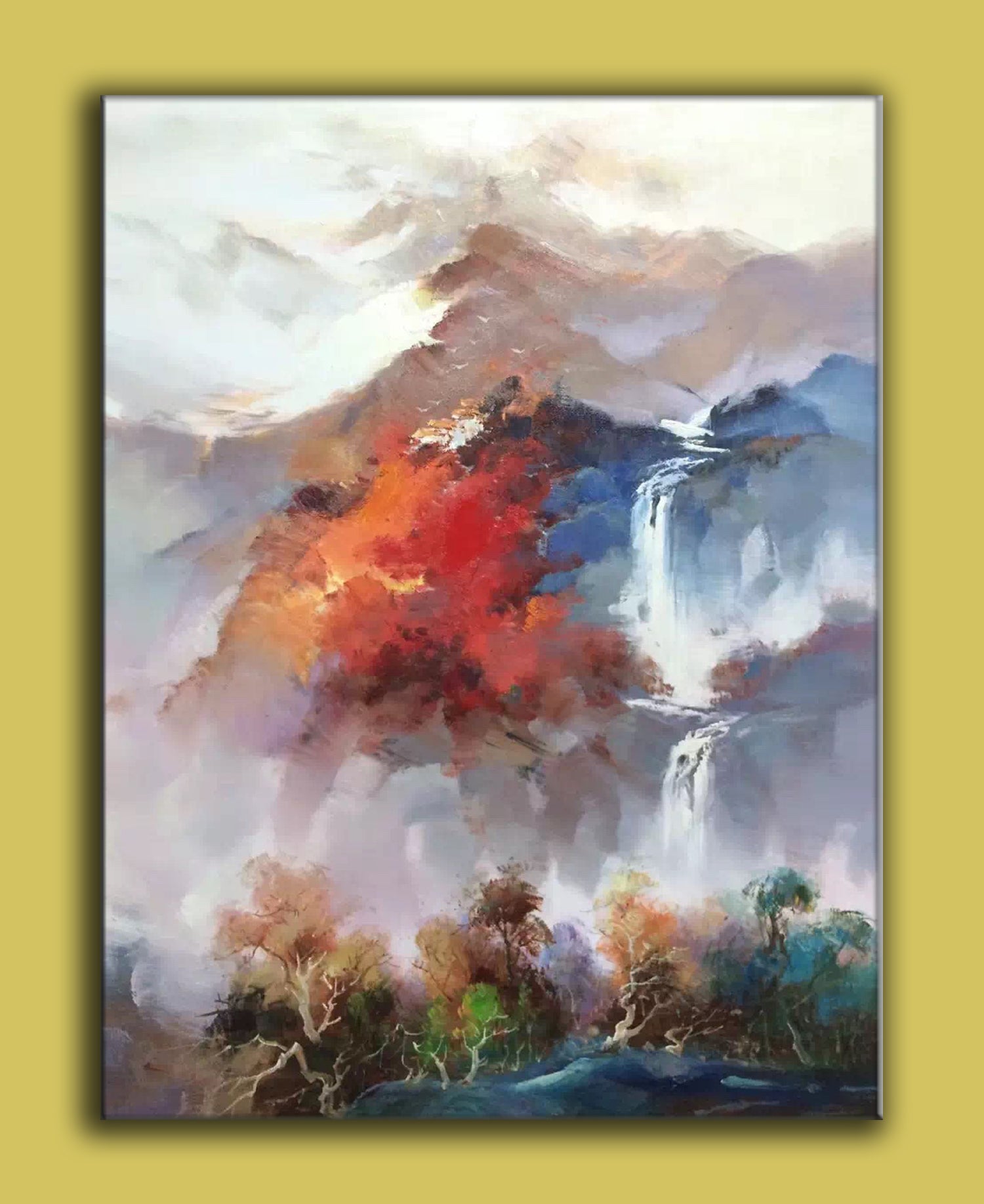Gallery-Inspired Interior Pieces: Oil Paintings for Sale
Gallery-Inspired Interior Pieces: Oil Paintings for Sale
Blog Article
Discovering Everything About Oil Paints: A Guide to Understanding Their Charm and Value
Oil paintings have actually astounded target markets for centuries, using a peek into the imaginative proficiency of different eras. Their rich history is linked with innovative methods and profound psychological expression. Comprehending the materials and approaches behind these artworks can enhance appreciation. In addition, the market for oil paintings provides opportunities for collectors and capitalists alike. As one discovers this fascinating globe, the concern arises: what makes an oil paint absolutely useful?
The History of Oil Paint: A Trip With Time
Although oil painting has origins that date back to old times, it genuinely prospered during the Renaissance, when musicians uncovered its convenience and rich shade capacity. Early instances can be mapped to the 7th century, with methods evolving significantly across societies. The medium ended up being noticeable in Northern Europe in the 15th century, especially via the works of artists like Jan van Eyck, that spearheaded its use for in-depth realistic look and lively colors. This duration marked a departure from tempera paints, permitting for greater deepness and texture. As oil paint spread, it influenced plenty of musicians, leading to work of arts by renowned figures such as Leonardo da Vinci and Rembrandt. The tool's heritage proceeds, forming the art globe well right into contemporary times.
Recognizing Oil Repaints: Products and Techniques
As artists explore the world of oil paints, they come across a varied array of materials and techniques that define this medium. The main elements of oil paint consist of pigments, which give shade, and drying out oils, such as linseed, that bind the pigments and promote application. Different ingredients can modify the paint's texture and drying time, enhancing adaptability. Methods like glazing, where clear layers are developed, and impasto, which includes using thick paint, permit various visual impacts. Furthermore, making use of brushes, combination blades, and also fingers can develop one-of-a-kind textures and finishes. Understanding these materials and techniques makes it possible for artists to completely reveal their creativity and achieve the desired influence in their art work.
The Function of Color in Oil Paintings
Color plays a crucial function in oil paintings, influencing both visual charm and emotional resonance. Understanding shade concept essentials, consisting of the relationships in between shades, can boost an artist's ability to share mood and ambience. In addition, understanding color blending methods permits higher deepness and richness in a painting's combination.

Color Concept Essential
Comprehending shade theory is crucial for musicians dealing with oil paints, as it forms the structure for producing visually interesting and harmonious make-ups. Color concept includes the study of just how colors interact, the shade wheel, and the relationships in between main, second, and tertiary colors. Musicians use complementary colors to enhance contrasts and develop focal factors, while comparable shades promote unity and cohesiveness within an item. Additionally, the principles of warm and trendy shades affect the understanding of depth and area in a painting. Comprehending these principles enables musicians to control shade efficiently, leading the customer's eye and communicating their desired message. Mastery of color concept ultimately enhances a musician's capacity to convey emotions and concepts via their work.
Psychological Influence of Shade
The psychological effect of shade in oil paintings plays a critical role in exactly how visitors link and regard with art work. Colors evoke particular sensations and state of minds, influencing the customer's mood. Warm colors like oranges and reds can develop a feeling of heat and power, while cool tones such as blues and greens frequently evoke calmness or introspection. Artists purposefully choose color combinations to enhance narrative elements, assisting the audience's emotional journey. The saturation and contrast of colors better amplify these results, attracting focus and producing emphasis. Inevitably, the interplay of shades in oil paintings not just boosts their visual charm however also functions as an effective medium for emotional expression, enriching the audience's experience and analysis.
Shade Mixing Techniques
While numerous aspects of oil painting contribute to the general composition, understanding shade blending techniques is vital for accomplishing desired impacts and deepness. Shade blending can be come close to through different methods, consisting of the additive and subtractive procedures. Additive blending includes integrating colors of light, while subtractive mixing counts on pigments, where colors mix to produce new tones. Musicians typically utilize a restricted combination to create harmonious jobs, comprehending the partnerships between primary, additional, and tertiary shades. Methods such as glazing and scumbling better enhance depth and luminance. By masterfully mixing colors, an artist can evoke feelings, produce prime focus, and attain a sense of realistic look, eventually boosting the painting's psychological and visual impact.
Famous Oil Painters and Their Iconic Functions

Well known for their proficiency of color and method, oil painters have created a few of the most well known art work in history. Popular musicians like Vincent van Gogh captivated audiences with his emotive brushwork in "Starry Night," while Claude Monet's "Impact, Daybreak" prepared for Impressionism. Leonardo da Vinci's "Mona Lisa" stays an enduring sign of creative brilliant, showcasing his ability in capturing human expression. On the other hand, Rembrandt's "The Night Watch" shows his innovative use of light and darkness. Various other remarkable figures consist of Pablo Picasso, that reinvented modern-day art with his strong testing in jobs like "Les Demoiselles d'Avignon," and Georgia O'Keeffe, whose vivid depictions of flowers and landscapes helped specify American innovation. Each artist's special style contributed substantially to the oil painting landscape.
How to Examine the Top Quality of an Oil Painting
Reviewing the quality of an oil paint includes a cautious assessment of workmanship methods, along with an evaluation of color and composition. Observing brushwork, layering, and the application of paint can disclose the musician's skill level. Furthermore, the interplay of colors and the total setup of elements contribute substantially to the painting's visual value.
Assessing Workmanship Methods
A precise assessment of workmanship strategies is crucial for determining the top quality of an oil paint. Evaluators must first take a look at the application of paint; thick, distinctive brushstrokes may suggest a knowledgeable hand, while overly consistent applications might suggest an absence of depth. oil paintings for sale. The layering technique is also vital; the presence of glazes and differed density can improve luminance and complexity. Furthermore, the top quality of the materials used, such as the canvas and pigments, plays a substantial duty in longevity and general visual. Attention to information in aspects like sides and changes between colors mirrors the musician's commitment to their craft. Ultimately, these methods contribute to the paint's psychological impact and market value, offering as indications of the artist's ability and intent
Evaluating Shade and Composition
While reviewing the high quality of an oil painting, one have to concentrate on the interaction of color and make-up, as these aspects are essential to the art work's total impact. Color choices can stimulate emotions and develop state of mind; consequently, the artist's palette should be taken a look at for harmony and contrast. A healthy make-up guides the audience's eye and develops a sense of unity. Musicians frequently use strategies like the rule of thirds or leading lines to enhance aesthetic rate of interest. Furthermore, the use of light and darkness can add depth, boosting the three-dimensionality of the paint. Eventually, an effective oil painting weds color and structure, involving the visitor and inviting a deeper recognition of the artist's vision and strategy.
Caring for and Preserving Oil Paintings
Proper care and preservation of oil paintings is crucial for maintaining their stability and long life. To safeguard these art work, it is important to present them away from straight sunshine, which can cause fading and staining. Keeping a secure environment with regulated temperature and moisture more help in stopping damages. Cleaning should be done gently utilizing a soft, completely dry towel, avoiding any kind click here of extreme chemicals that can damage the paint or varnish. Routine evaluations for signs of damage, such as flaking or breaking, are advisable. When storing or transporting oil paints, correct cushioning and framing are needed to prevent physical injury. Ultimately, diligent care adds to the visual allure and value of oil paintings gradually.
The Market for Oil Paintings: Accumulating and Spending
Recognizing the market characteristics for oil paints is essential for financiers and enthusiasts alike. The value of these artworks is influenced by various aspects, including the musician's reputation, historic relevance, and current fads. Collection agencies commonly look for items that resonate personally while thinking about prospective recognition in value. Galleries and auctions offer as key places for purchasing and selling, with prices fluctuating based on demand and rarity. Purchasing oil paints needs study right into the marketplace, in addition to an understanding of credibility and provenance. Additionally, emerging artists may use opportunities for considerable returns, while established names can command high prices. Overall, a tactical strategy to gathering can produce both visual enjoyment and financial incentives.

Regularly Asked Questions
What Are the Environmental Influences of Oil Paint Materials?
The environmental influences of oil painting materials consist of the launch of unpredictable natural compounds (VOCs), unsafe waste generation, and source extraction for pigments. These elements add to air pollution and eco-friendly destruction, elevating worries among environmentally mindful artists and consumers.
Just How Do Various Canvases Influence Oil Paint Outcomes?
Various canvases affect oil paint results considerably. Texture, surface area, and absorbency quality can modify paint application, drying out times, and shade vibrancy. Artists usually pick certain canvases to achieve preferred effects and boost their artistic expression.
Can Oil Paintings Be Brought Back if Harmed?
If damaged, Oil paintings can undoubtedly be recovered. Specialist conservators utilize various techniques to repair splits, tidy surface areas, and address staining, making sure that the art work keeps its initial charm and value for future generations.
What Are the Indications of an Initial Oil Paint?
The indicators of an initial oil painting include noticeable brush strokes, appearance variations, and an irregular canvas weave (oil paintings for sale). Furthermore, authenticity may be validated through provenance, trademarks, and the existence of a varnish layer one-of-a-kind to oil tools
Exactly How Has Technology Influenced Modern Oil Paint Techniques?
Technology has greatly affected modern oil paint techniques by introducing electronic tools for planning, boosted materials for appearance and longevity, and on-line platforms for marketing and sharing art, consequently expanding musicians' imaginative opportunities and audience reach. Oil paint has origins that date back to old times, it really thrived during the Renaissance, when musicians found its flexibility and rich shade capacity. The emotional influence of shade in oil paintings plays a crucial function in just how viewers perceive and link with art work. While numerous elements of oil paint add to the total composition, grasping color blending strategies is essential for attaining desired effects and deepness. Evaluating the quality of an oil painting includes a cautious evaluation of workmanship strategies, as well as an evaluation of shade and make-up. While evaluating the quality of an oil painting, one should concentrate on the interaction of shade and make-up, as these components are fundamental to the artwork's overall impact.
Report this page